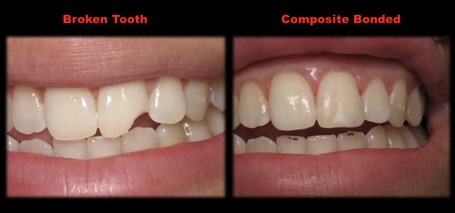It was my first visit to Dr McCrea . I had an extraction done and bone graft, and he explained everything that was going to be done. I felt very comfortable and he was very patient in answering all my questions. He also has a staff that is very friendly and very polite. I thought I was going to walk away from there with pain but I didn't. Thanks Dr McCrea for the great service. My teenage children and I...
Treating Tooth Decay
There are many materials available to restore tooth decay today. We have the time tested and safe amalgam (silver) filling, the composite resin (tooth colored) filling, gold crowns, porcelain fused to metal crowns and, now, Zirconia based crowns. Each of these restorations has its own indications for use and its own set of strengths and weaknesses. Dr. McCrea uses all of these restorations in his practice.
Composite: Composite resins (tooth colored fillings) are an excellent choice for small to medium sized cavities on back teeth and, of course, the material of choice for front teeth. Composite resins are great for treating new decay because their placement requires less natural tooth structure be removed to treat the tooth.

Amalgam: Silver fillings are among the oldest materials we have available to treat dental decay. It has come under fire for the inclusion of mercury in its makeup. Scientific research has not been able to demonstrate any health risk from Amalgam fillings. Its history proves it to be a good, economical, long lasting material even if it is not the best looking material. Dr. McCrea still has a couple of these type fillings that were done when he was 6-8 years old and has no intention of replacing them unless they begin to fail. We understand individuals may have concerns about amalgam as a restorative material and will select an alternate material if you would like to avoid its use.
Silver Diamine Fluoride: Is a treatment for advanced decay. It is an old technique that has had a resurgence of interest in recent years. Silver Diamine Fluoride is applied to the teeth multiple times, dependent on the degree of decay, and will convert soft decay to an arrested for m that is hard and now may not require additional treatment. The main downside to this treatment is it is very discolored. Dr. Vo brought this treatment to our practice as something we can use for appropriate cases.
Crowns: A crown is a restoration that covers a tooth to restore it to its natural shape and size. A crown also strengthens and improves the appearance of the tooth. Crowns are necessary when a tooth is decayed and/or broken beyond what an amalgam or composite resin filling can repair. Crowns are also recommended to treat "Cracked Tooth Syndrome". This is when pain is caused by the flexing of a crack in the tooth when someone bites down a certain way. Decay is not necessarily present, but pain is. The crown covers and binds the tooth together keeping from the flexing under pressure. Crowns can also be used to rebuild wear on the teeth, both front teeth and back teeth. New materials allow us to make crowns that are incredibly durable and no longer have a dark gray metal line. The newer ceramics are very lifelike and natural looking.

Please feel free to ask about any of these options to treat your teeth.

